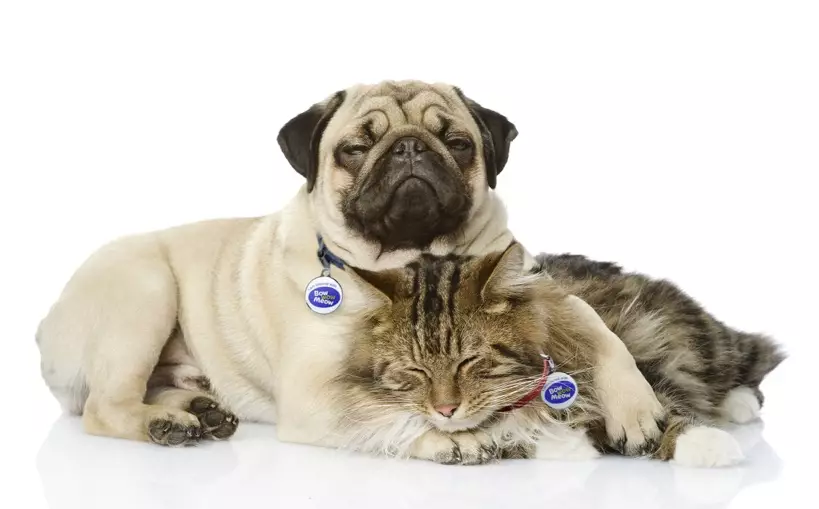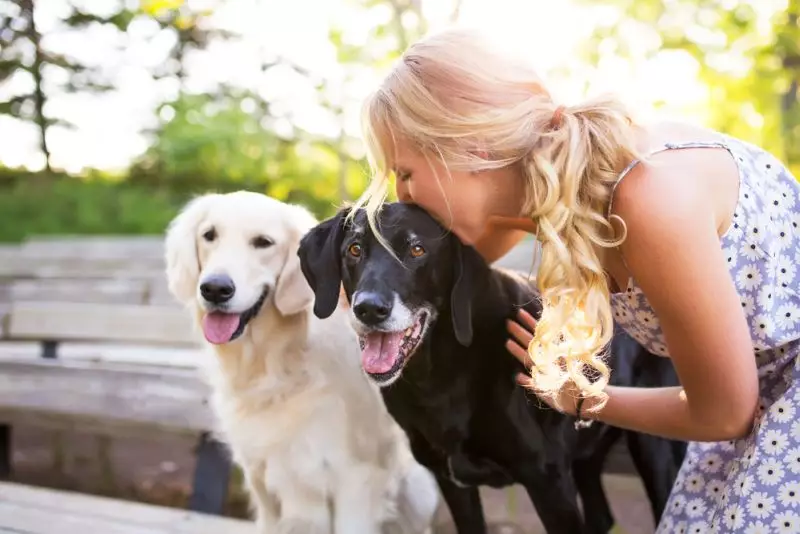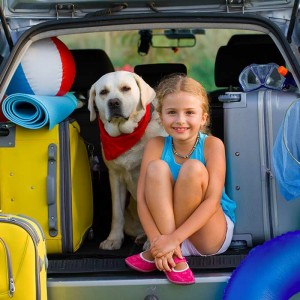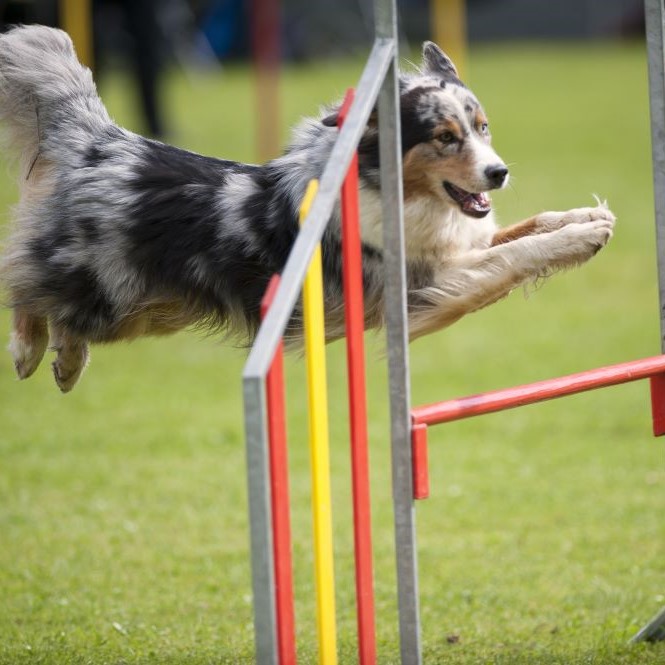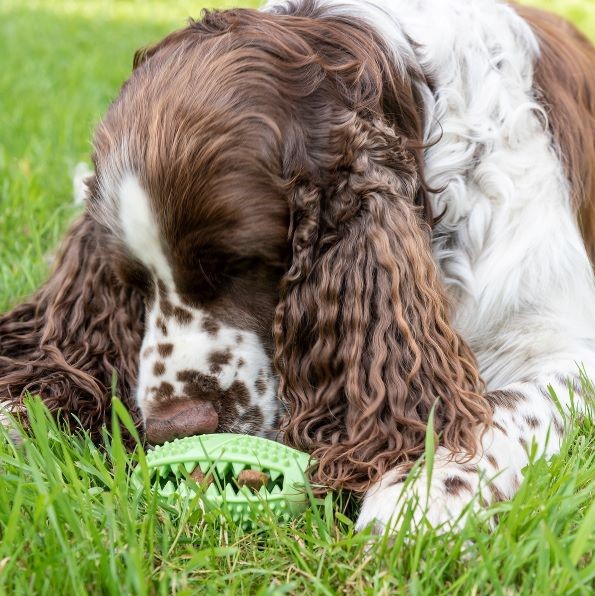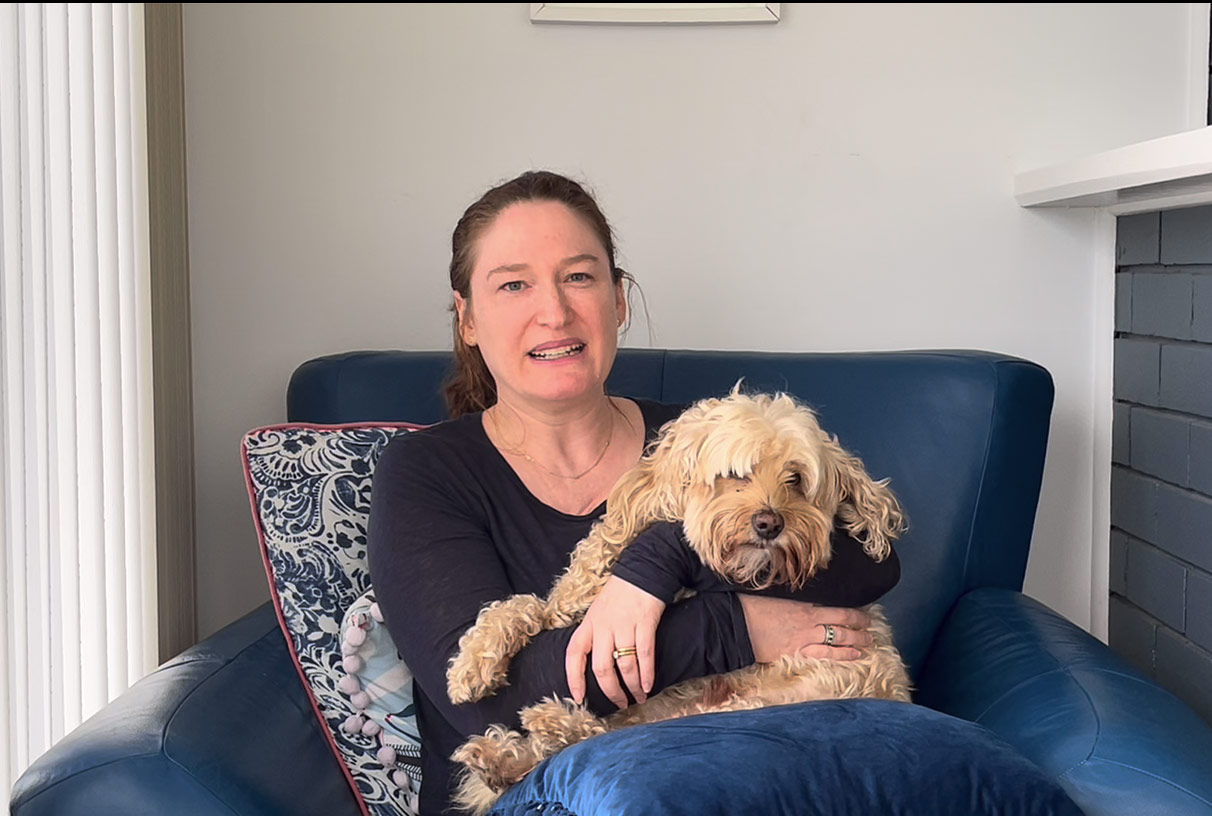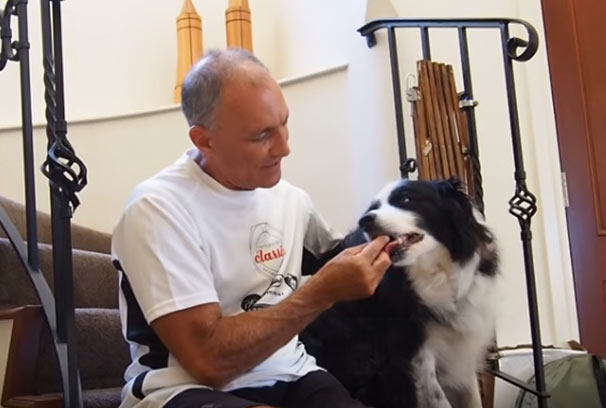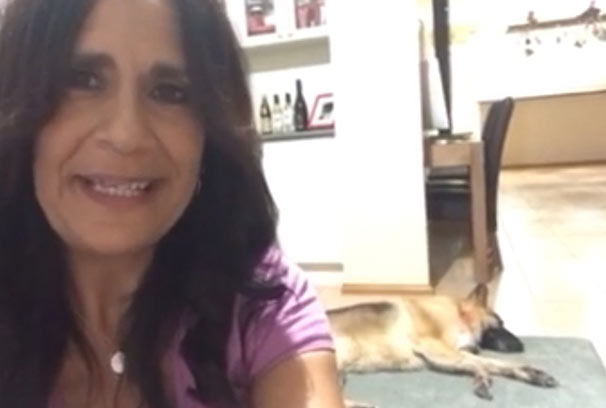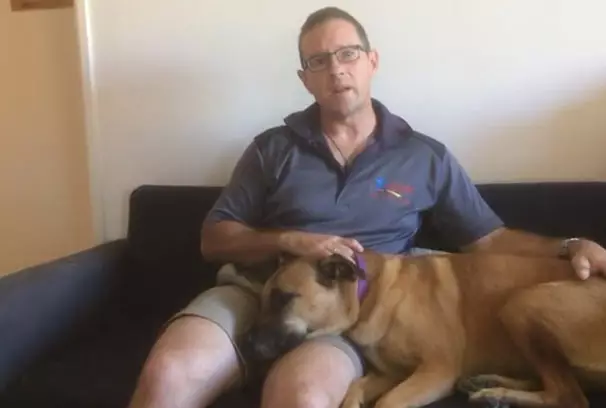Home-alone boredom busters for dogs

Like many dog parents, you may be searching for inspiration to keep your dog occupied and entertained while they are alone at home. As more of us return to the office and post-Covid normality, we are leaving our fur babies alone for longer periods and with increasing frequency than they have been accustomed to these past few years.
Dogs that no longer have their owner’s constant presence and regular cuddles, play and interaction during the working day may become restless and bored. Left to their own devices, they may look for other ways to keep themselves busy and expend pent-up energy, such as chewing items of clothing or digging up the garden . After all, there’s only so much lying around and napping even a dog can do all day!
 If these scenes sound at all familiar, don’t despair; there are ways we can keep our ‘home-alone’ dogs busy and engaged in stimulating, safe and acceptable activities for varying periods of time. Read on for our top boredom busters to try out on your dog next time you leave him alone at home for a few hours or more. The concept to keep in mind is that mental stimulation and problem-solving can be just as entertaining and challenging for dogs as physical exercise.
If these scenes sound at all familiar, don’t despair; there are ways we can keep our ‘home-alone’ dogs busy and engaged in stimulating, safe and acceptable activities for varying periods of time. Read on for our top boredom busters to try out on your dog next time you leave him alone at home for a few hours or more. The concept to keep in mind is that mental stimulation and problem-solving can be just as entertaining and challenging for dogs as physical exercise.
Note that some dogs will love most of these suggestions, while others might find just one or two of interest to them. Some will remain occupied for hours on end, while others might lose interest after a couple of minutes. It may be a matter of trial and error to find the most engaging activities for your particular dog and require a little bit of prep time before you leave the house.
The joys of toys
A favourite toy can occupy dogs for a few minutes or a couple of hours, keeping them engaged and alert and distracting them from chewing inappropriate items like shoes or furniture. Unfortunately, not all dogs are interested in toys. Other dogs may view a toy simply as prey and try to destroy it as fast as they can by ripping off ears and limbs, removing all the stuffing and scattering around the house (which is great entertainment for the short time that it “survives”, but a costly and messy exercise for you!).
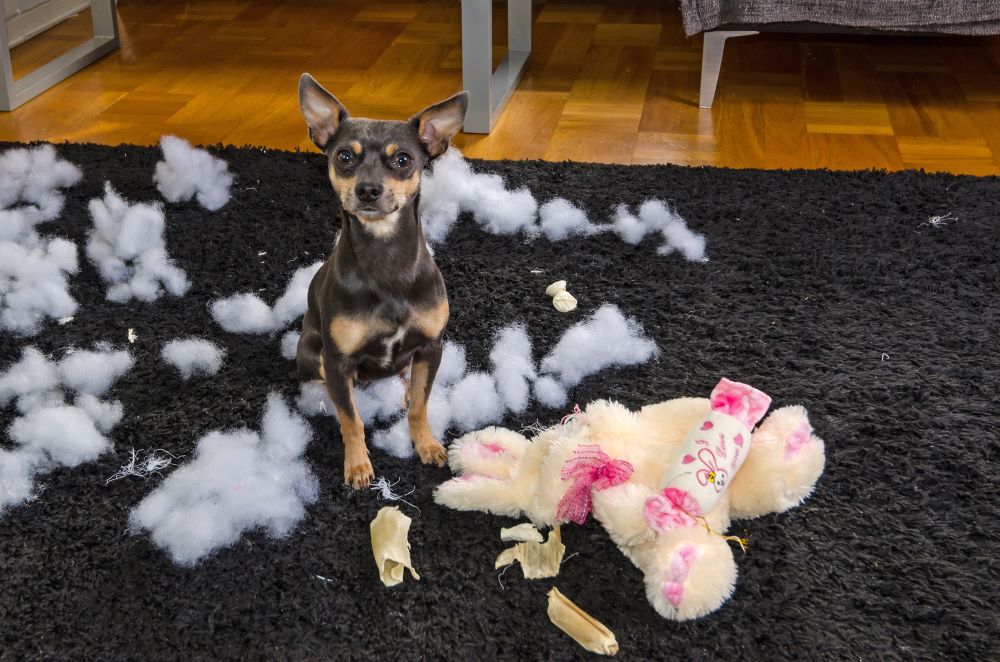
If you are wondering what makes a toy appealing, it’s not always the bells and whistles (we mean that literally!). The treasured toy of one dog may be completely ignored by another, or even freak some dogs out if it makes an unfamiliar noise, for example. A simple piece of braided rope may become a firm favourite, while an expensive, highly rated gadget may lie gathering dust. Some dogs are sound motivated and enjoy toys that squeak, rattle or make a range of noises. Some prefer soft, plush toys that they can carry around and cuddle up with. Some are only interested in toys that can be chased, chewed or dispense food.
Just like kids, dogs get bored with the same old playthings, so we suggest rotating their toys regularly to keep their interest. A good idea is to leave out a toy box with a few old favourites and one or two new additions. That way, your dog has the added challenge of sifting through the toys in the box to find the one he wants. You could also scatter the toys around the house in various places for your dog to find. To increase the challenge, turn it into a game of ‘hide-and-seek’ by leaving toys in different hiding spots each time. Make sure that you check all toys regularly to make sure they are still safe (no tears or broken bits that can be swallowed), as you won’t be around to supervise.
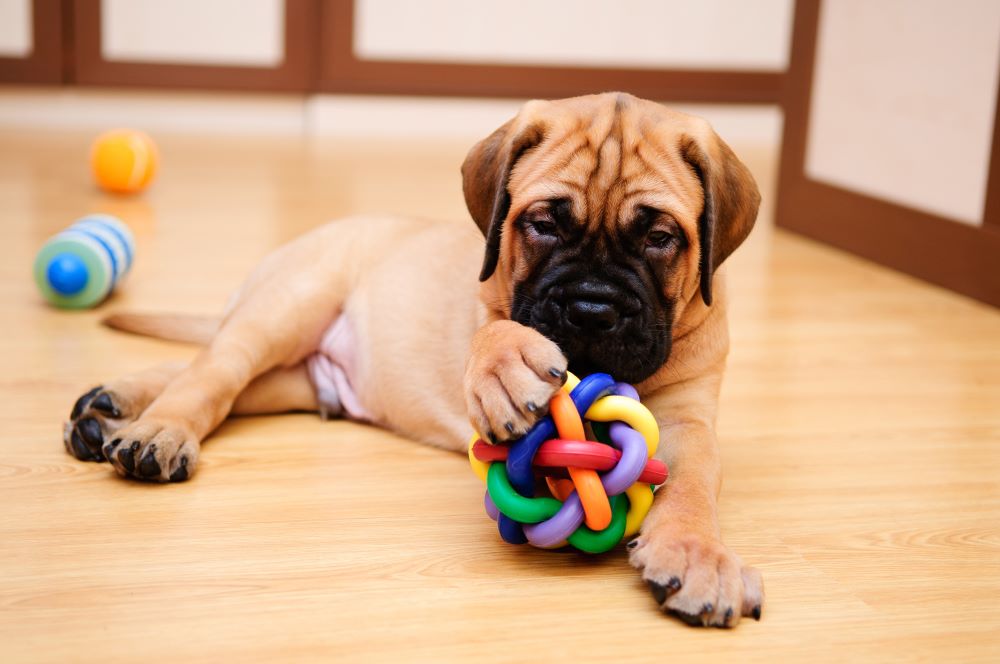
Let your dog have a ball
For dogs that loves balls, it’s a no-brainer – leave a few out and they can keep themselves occupied for quite some time (a few balls is a good idea because some will inevitably roll under the couch or into the bushes where the dog can’t retrieve it). There is a huge range of balls for dogs available, with a variety of textures, sounds and lights to add to the entertainment value. Before purchasing, make sure that balls and other small toys are the right size for your dog. Never provide a ball that can fit entirely into your dog’s mouth, as it could be a choking hazard.
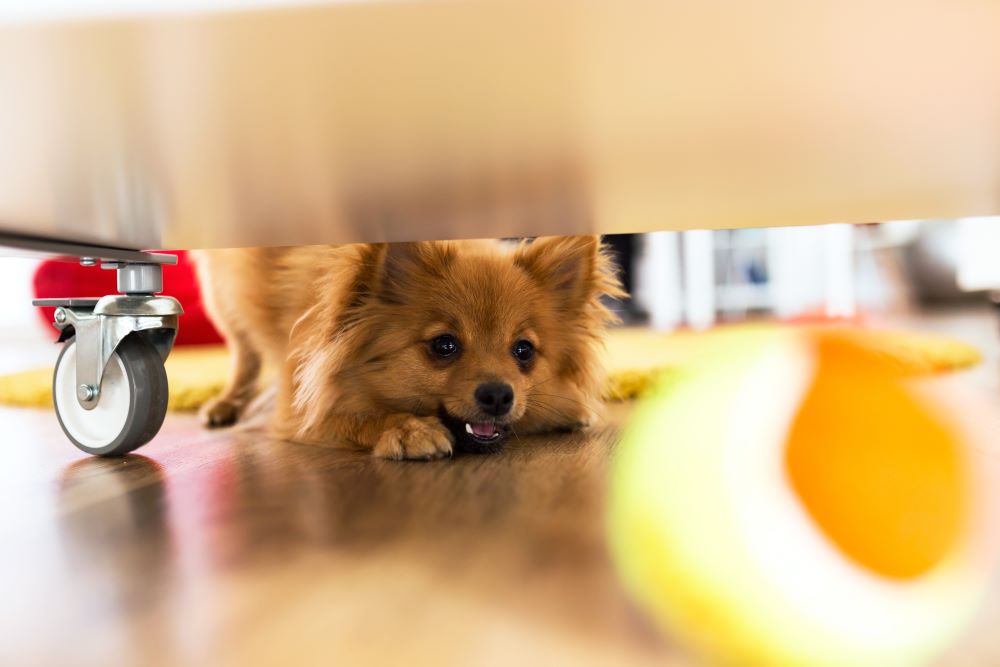
For dogs that are completely obsessed with balls, here are some more options:
- Create a ball pit by filling a large container or plastic clam shell with an assortment of dog-friendly balls of different shapes, sizes, textures and other features to provide hours of entertainment.
- Purchase an automatic ball launcher, train your dog to return the ball to the unit and ‘voila’ – hours of fun and exercise in the backyard or indoors. Look for one that allows you to adjust the angle and distance the ball is thrown to suit your available space. Safety features such as a motion sensor, an audible tone when the ball is about to launch and an automatic sleep mode are worth spending a bit more on.
- Electronic balls that jump around and/or make a noise can keep your dog engaged and provide ongoing fun. Look for one with an automatic shut off for rest periods, and make sure it’s durable enough for intense play.
Bubble, bubble, not much trouble
Some dogs are fascinated by watching, chasing and catching bubbles. If your dog hasn’t experienced bubbles before, buy a simple bubble wand and give it a try. Your dog may be very wary initially, but will soon realise that bubbles are non-threatening and in fact, a great deal of fun!

Unfortunately, you need to be around to blow bubbles the old fashioned way, so if you have a bubble-obsessed dog, an electronic bubble blower may be a very worthwhile investment for home-alone entertainment. Look for one with an auto shut off or timer so that it can start up again later on. You can even purchase bacon-scented bubble liquid specially for dogs, or you can make your own with some dish washing detergent and water, while adding corn syrup to the mix will make the bubbles last longer.
Jumping for joy
For dogs that love to jump, bungee hanging toys are contraptions which typically comprise a bungee cord with a toy attached to one end. It is suspended from a tree or a beam so that the toy is just at the height where your dog has to stand on his hind legs to reach it. To maintain the dog’s interest, the toy can usually be a filled with dry food or treats that dispense randomly when the dog jumps up and knocks it about.
Before purchasing an expensive bungee toy, you could experiment with temporary homemade version to gauge your dog’s interest while under your supervision. Look for instructions online or simply tie one end of a long piece of elastic or string around a treat dispensing toy and loop over or tie to a beam or tree branch a short distance above your dog’s head. Encourage your dog to jump up and knock the toy to release the treats.
Food, glorious food
Many dogs would happily spend hours eating, if they were only given the opportunity! If our dogs value food above all else, we can take advantage of this food focus to keep them occupied for as long as possible during alone time. However, we need to be careful not to overfeed them as over time this could lead to weight gain and the many potential health risks associated with it.
Here are some great ideas to use food as a home-alone activity. Note that these tend to work best for highly food-driven dogs!

Food to go
Instead of feeding your dog his morning meal well before you leave home, do it just as you are leaving. Be sure to say goodbye to him as usual, then leave him occupied with this favourite pastime.
Slow food
Instead of giving him a bowl of food that he will wolf down in a couple of minutes, make him work for it. Alternate the suggestions below to keep his interest and prevent boredom setting in.
- Provide his meal in a slow food dispenser or snuffle mat, which can keep him busy for around twenty minutes instead of two.
- Scatter his food around the lawn, deck or kitchen floor for him to search, find and devour (this works best with dry food!).
- Divide his meal into a few different bowls or containers and place them in various locations for him to find. Change the hiding places regularly to keep him challenged. Over time you can increase the challenge by hiding the food items in trickier places – under a rug, on a chair or coffee table, behind a partly closed door, inside a box etc. You can also place the food in containers that are a challenge for him to open – a box with a loosely fitting lid, a closed egg box etc.
- A licky mat is a good option for wet food. Smear the food over the mat and it will take your dog anywhere from 10 to 30 minutes to lick it completely clean and, if you put it in the freezer beforehand, it will take longer. As a bonus, repetitive licking is said to have a calming effect on dogs.
Let there be food
One of the best tools to keep your dog busy for a while is a Kong or similar type of food dispensing toy. These are made of hollowed out rubber in an assortment of shapes and sizes that can be stuffed with dog friendly foods. You can use a larger size one for an entire meal or a smaller one for treats or snacks. If your dog destroys everything he chews, you can get one that’s designed for extreme chewers.
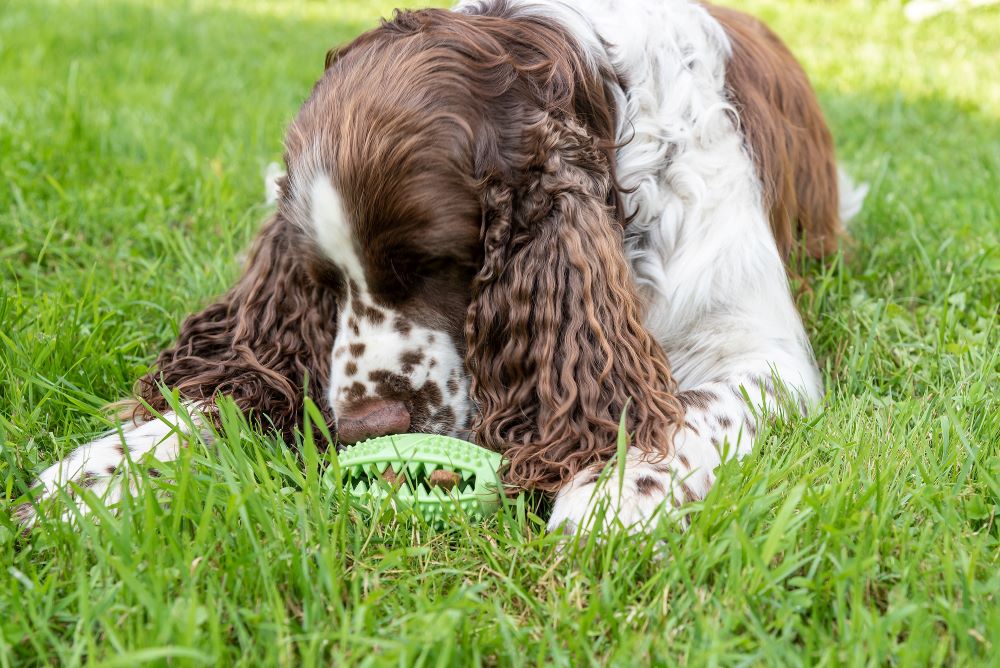
Stuffed Kongs only take a few minutes to prepare. For a longer lasting treat, fill it completely with wet food, kibble or a yummy treat of mashed banana, unsweetened Greek yoghurt or plain, unsweetened peanut butter (or a combination of these) and freeze overnight. A frozen Kong will take longer to empty of its delicious contents!
Give the Kong to your dog only as you are leaving the house or leave it in a spot where he can find it later, and it should keep him occupied for at least 30 minutes. If you are working from home, a stuffed Kong can keep your dog busy while you’re on an important phone call. They are also a great option for bad weather days when you can’t get your dog out for regular exercise and for dogs who are recovering from surgery and aren’t allowed to move around much.
Homemade can be easy as pie
You could also go the DIY route when it comes to food and treat dispensers. Here are two great ideas that don’t require much effort or craftsmanship:
- Save cardboard milk or juice cartons and fill them with some treats. The cartons make a noise when the dog is shaking them around trying to get the treat out, and, if he lands up shredding it to the treat, it shouldn’t cause too much mess or damage (it’s only cardboard!).
- Make a simple puzzle toy using a muffin tin or an empty egg box and twelve balls of the right size to cover the openings. Place food or treats in the compartments and cover them with the balls. Your dog will soon figure out how to remove the balls to access the food underneath.
Puzzles for muzzles
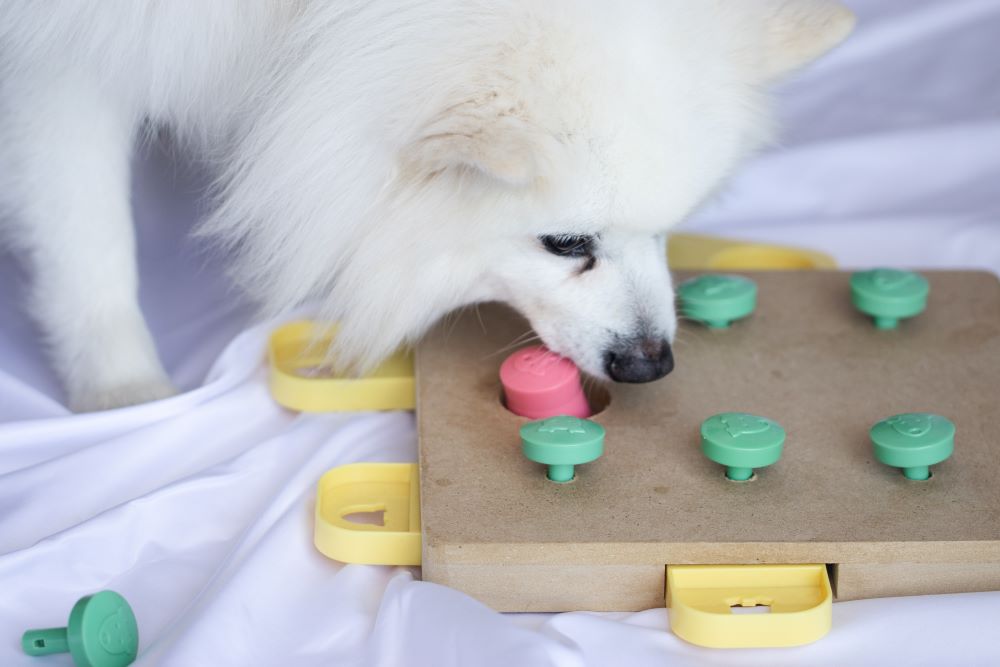
Great for mental stimulation, puzzle toys come in many different designs rely on food or treats to reward the dog for solving the challenge. You’ll need a few minutes to hide the rewards in the secret compartments. Your dog should use his keen sense of smell to locate the treats, and his nose or paws to open a cover, push a button or rotate a lever, depending on the puzzle’s complexity.
If you are looking to buy a puzzle, Nina Ottosson has some great ones that are graded according to difficulty. You may need to help him the first few times so that he knows what to do. If your dog is new to these types of puzzles, spend some time teaching him how to solve it before leaving him to tackle it on his own, or he may get highly frustrated.
Let sleeping dogs lie comfortably
Dogs sleep for around twelve to fourteen hours in a 24 hour period, so they will be happy to snooze away part of the day. Encourage them to take all the R&R they need by ensuring they have a choice of comfy places to curl up or stretch out in, both in- and outdoors.

In cooler weather, placing a soft blanket or pillow on the cold leather couch can turn it into an inviting place to nap on, as it will a tiled or wooden floor. This simple act can make all the difference for a sparsely coated or older dog, taking the chill out of their bones. On a cold day, dogs of all ages and stages will particularly enjoy a lie-down in a sunny spot, so if you can, place their bed or some soft bedding where the morning or afternoon sun streams in. In hot conditions, make sure their bedding is out of the sun, preferably where the breeze, fan or air-conditioning can keep them nice and cool.
Play that funky music
Actually, research suggests you should play classical music if you want to reduce your dog’s stress while they are home alone. On the other hand, heavy-metal tunes may prompt barking and agitation, so we recommend steering clear of anything too up-tempo!
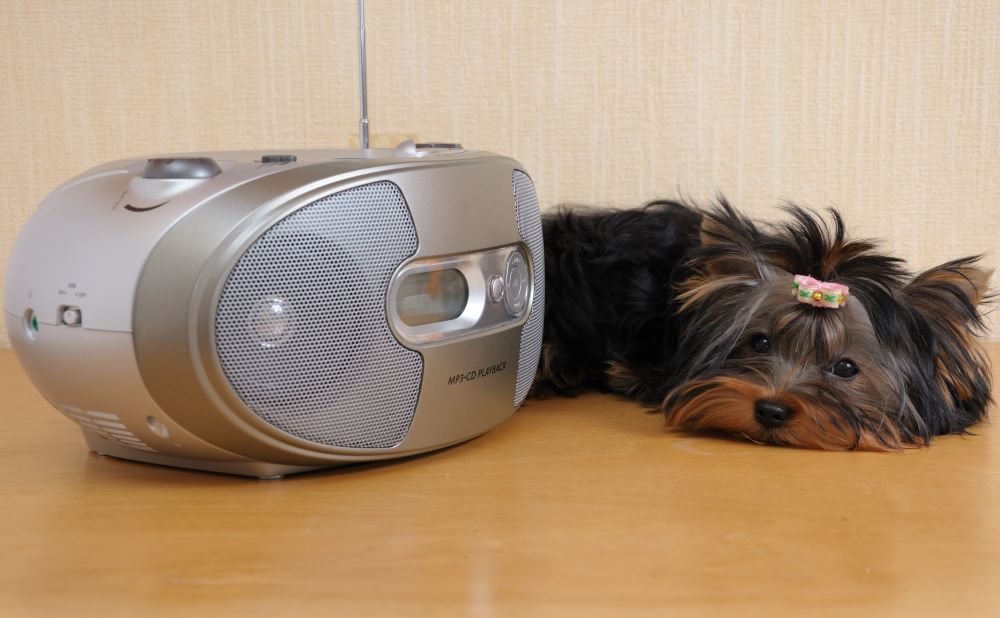
By leaving a relaxing music playlist playing while you are absent, you can help your dog feel calm and enjoy some quiet time. If your classical collection is sadly lacking, you can find dedicated doggie playlists on YouTube or your favourite music app.
A walk in the park
Dogs are social creatures. While they do spend many hours of the day sleeping and resting, the American Kennel Club recommends that they should spend no more than 6 to 8 hours alone during the day without interaction with humans or other dogs. If your dog struggles with alone time or must spend more than the recommended 6 to 8 consecutive hours alone, consider using doggie day-care once or twice per week or enlisting the help of a dog walker, neighbour, friend or extended family member who can spend some time playing with or walking your dog.
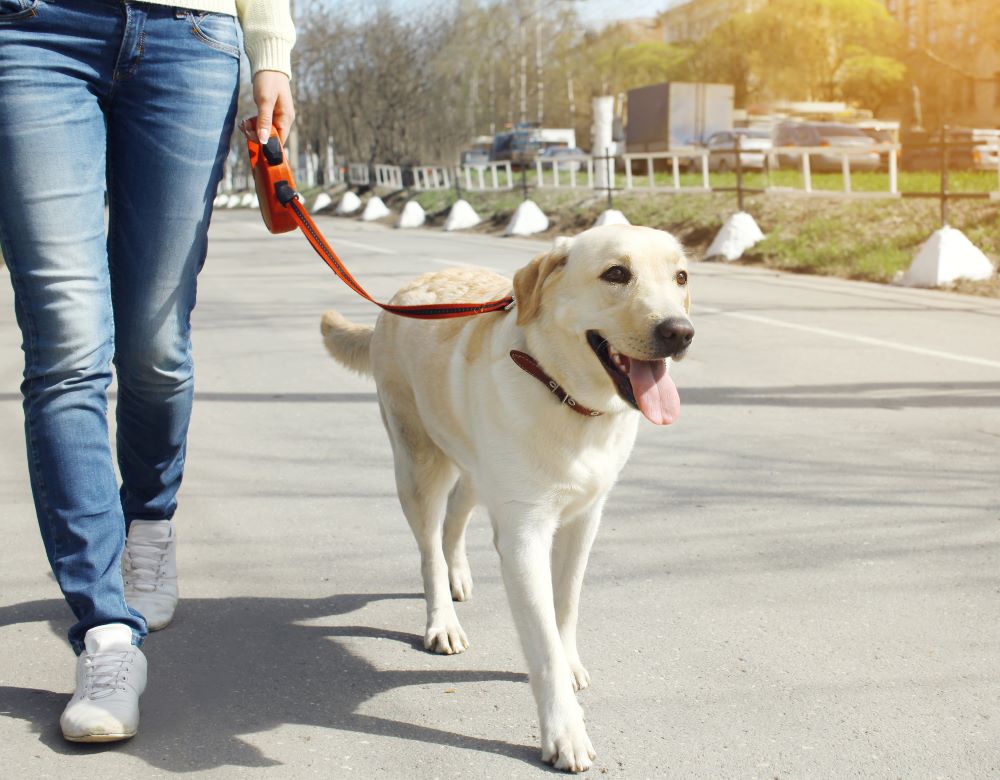
In a nutshell…
By taking a few minutes to prepare the day’s activities before you leave home or even the night before, you can make sure that your dog will have a variety of options to keep him engaged, entertained and stimulated for at least part of his alone-time. Of course, all of these activities can also be used to keep your dog occupied when you need to work from home or when the weather is too bad for outdoor exercise.
See our article Indoor workouts for dogs for great ideas for rainy day activities you can do with your dog.
Still concerned that your dog is suffering from boredom becoming destructive in your absence? You can always check in to see how he’s going by simply positioning a second smartphone in a spot where you can get a view of the area he is most likely to frequent and make a video call from it to your phone before you leave. If you want to check in on a regular basis, there are a number of apps available on subscription that utilise two smartphones, as well as pet monitoring devices or cameras made specially for this purpose.


